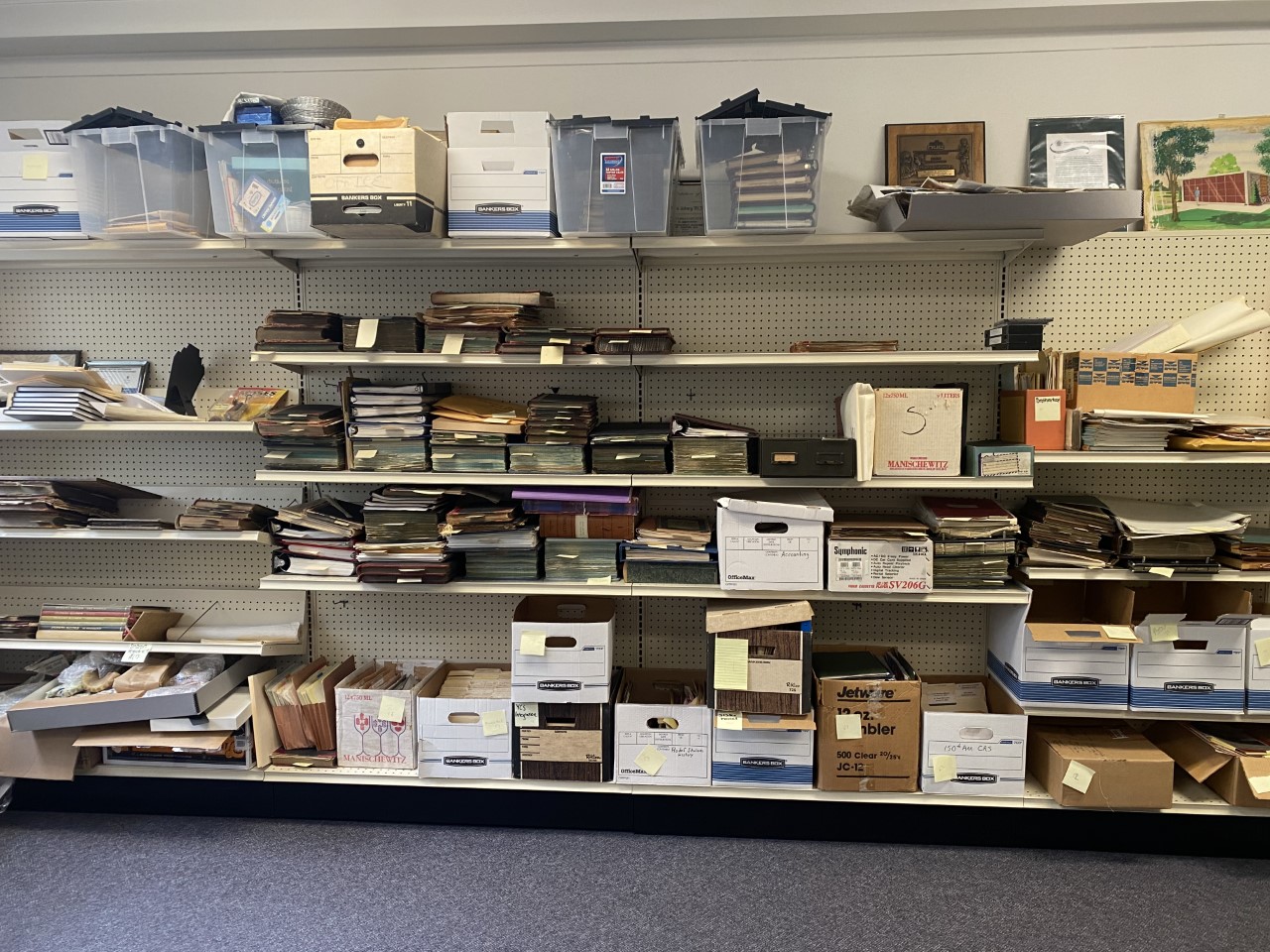By C. Aileen Blaine
In scattered closets and rooms within the Congregation Rodef Sholom lie artifacts of modern archaeology. Now, Youngstown State University and other resources join the temple in an archival project seeking to make sense of the findings.
The project started in early 2020, Rodef Sholom’s executive director Sarah Wilschek discovered artifacts dating back 154 years hidden in the basement. She then reached out to an AmeriCorps Ohio History Service Corps member with the original idea of creating a museum. But the objective morphed into creating an active archive of materials dealing with the current building’s past.
“We were founded in 1867, so to have that quantity of history just laying around our building, wanting to be touched and used — it’s pretty awesome,” Wilschek said.
Due to the sheer quantity and extent of the uncovered materials, it was too much for Wilschek to complete alone, so she reached out to neighboring institutions like YSU and the Youngstown Historical Center of Industry and Labor.
YSU history professor Thomas Leary also became involved with the project, overseeing the spring 2021 practicum class that participated in the archival work as a hands-on approach to working with history.
“[The students] appreciated the opportunity to help a community institution take some steps toward making its contents available, not only to the members of the synagogue, but also to researchers and others who might be interested,” Leary said.
Graduate student Hannah Klacik was a student in the applied history practicum and now works for the congregation by sorting and organizing files and papers, among other tasks.
“When I started the program, I was interested in curation museum studies,” Klacik said. “Now, I’m definitely more interested than I was before in archival work.”
“We have a lot of famous congregants who have come in and invented various things,” Wilschek said, such as engineer Julius Kahn’s novel concrete building methods that were developed and tested on the building’s 1913 construction.
From the intricate mosaic drinking fountain memorializing a child who died in 1929, to the architects’ original painting of the building, the hallway of the second floor serves as a walk through history. The sanctuary, done in colors of sky blue, gold and white, is a prime example of architecture in a time before microphones or sound systems were common, as the high, domed ceiling helps sound carry efficiently.
Materials discovered include birth records, death records and previous rabbis’ personal notes. There are even construction blueprints by the architect M. Scheible, who was involved in designing other religious buildings in the Youngstown area during the early 20th century.
“I didn’t realize how much stuff we had and how much we didn’t know about our history,” Wilschek said.
“You never know what you’re going to find,” Klacik said. “You might think that you’re done with a certain theme or box, and then you find something else, and then you’re like, ‘Okay, where’s this going to go?’”
The congregation has also partnered with the Center for Holocaust and Judaic Studies through a grant program to introduce scholars to the materials and complete research on the findings.
Wilschek encourages anyone who may have any connection or information about the congregation’s building to contact her at swilschek@congregationrodefsholom.com
